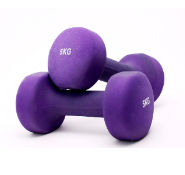
When buying from China, adopt the mindset that everything will go wrong – until the opposite has been proven. Business owners making decisions based on assumptions of “how things should be handled”, or “how things are done back home”, are prone to find themselves with a lighter wallet. The key to success lies not in learning the customs of tea drinking, or handing over your business card with both hands. Such things are, contrary to what many so called ‘China experts’ say, largely irrelevant when dealing with Chinese manufacturers.
There are no written rules as to how the process shall be managed. You are entirely on your own, and the outcome is decided by the applied procedure. Extreme pragmatism is the answer. A million things can go wrong, and they will, unless you take action now. Risks must be managed from the very first email sent to a supplier, to the factory floor. That’s what we’ll cover in this article. Keep reading, and learn more about the 6 measures that truly make the difference between success and failure.
1. Supplier Screening: Avoid choosing the wrong supplier from the start
The purpose is to avoid scammer and ‘unqualified suppliers’ from the very beginning. Time is money, and why invest months of work on a supplier that’s unable to ensure compliance with local regulations and your own quality requirements from the very beginning? I don’t need to further explain why you should avoid scammers, but they are out there, and deals that seem to good to be true are often exactly that.
Yet, small business owners importing from China tend to see pricing as the only differing factor between suppliers. Yet, suppliers are not created equally. What really matters when choosing a supplier is the ‘hard factors’, including the following:
- Registered Capital
- Business Scope
- Compliance with overseas regulations and standards (e.g., REACH and ASTM F936)
- Quality Management System Certification (e.g., ISO 9001:2008)
- Buyer References
- Bank Account Status
Keep in mind that this is just the first step. Maintain contact with as many suppliers as possible, at least 3 to 4, after this stage.
2. Buying Product Samples: Verify the suppliers capability to match your quality requirements
A supplier make look good on the spreadsheet, yet fail to deliver a satisfactory product. There is no universal definition of ‘good quality. Some ‘good suppliers’ are simply great at producing low cost products. Think Zara versus Christian Dior. That’s why a supplier capability to comply with your quality requirements (e.g., material specifications and dimensional tolerances) can only be demonstrated through a physical product sample. A product sample can based on an original factory design, with or without branding – or an OEM design. The purpose is all the same, to verify if the supplier is able to deliver what you want.
3. Sign a Sales Agreement: Prevent quality issues before they occur
Miscommunication concerning quality requirements, and the supplier capability to comply, is the biggest source of quality issues. Most sales reps in China don’t have a technical background. As such, they tend to make promises they cannot keep.
A Sales Agreement is so much more than dispute resolution and compensation terms. It’s also the most important mechanism of communication between the buyer and seller during the procurement process. As a Sales Agreement must be signed and stamped by the legal representative, it gets serious attention from the higher levels of the company. Thus, it’s common that the suppliers requests final adjustments to terms concerning quality requirements, compliance requirements and production time.
That’s a good thing, assuming such requests are made before you wire the deposit. The main purpose of the Sales Agreement is to communicate your product related requirements – and how you will take action if the supplier for any reason fail to comply. Enforcement may not always require a lawyer, as explained further down this article.
4. Paying suppliers: Never pay everything upfront
In order to get what you want, you must give the supplier an incentive to follow your instructions. How, and when, the supplier is paid, is critical – and can be the decisive factor between success and failure. By paying a manufacturer all upfront, you remove their incentive to comply with the terms set in the contract. Yes, you can still discover quality issues, but you have virtually no ammunition left if it turns out that a large number of units are defective – or worse, if the batch turns out to be non-compliant.
While a 30% deposit, pre-production, is required, the final balance payment (usually the remaining 70%) must only be paid after the following:
a.) The quality of the products has been verified
b.) The compliance with all applicable safety standards and regulations (e.g., substance restrictions and labelling requirements) has been verified.
I can tell from experience that Chinese suppliers are much easier to deal with as long as they have something to gain – in this case, getting paid. Sure, they could drop out and you’d still lose the deposit payment, but selling the goods on the domestic market is rarely a viable option for the supplier. Whatever you do, don’t settle the payment until quality and regulatory compliance is verified.
5. Quality Inspections: Discover quality issues at the source, before it’s too late
Quality, i.e., compliance with all design and material requirements, must be verified at source, on the factory floor. Manufacturing is not a science, and it’s not a matter of whether or not there will be quality issues, but how severe they’ll be. That’s where the Quality Inspector comes in. Its role is to check a certain number of batch samples, according to a protocol and deliver the result to the buyer.
However, it’s your job to provide the Quality Inspector with the information he or she needs to properly carry out the inspection. As said, there is no universal definition of good quality, so it’s your job to define what ‘quality’ means to your business, in technical terms.
6. Laboratory testing: Verify compliance with all applicable regulations, before shipment
There are a few things that a quality inspector cannot check while in the factory. Verifying compliance with certain product safety standards and substance regulations requires more slightly sophisticated equipment than a yardstick. Thus, the final step of the quality assurance process is to submit batch samples (one or more) to a product testing company, such as SGS or Bureau Veritas.
While such testing may not always be mandatory, compliance is. However, for some products, batch testing is in fact mandatory, and the customs may refuse entry if the relevant documents cannot be provided by the importer.
7. Use High quality Export packaging: Don’t fall at the finish line
Placing cargo in high quality export packing should be rather obvious. Yet, more often than not, Chinese suppliers tend to use cheap and substandard packaging materials, that may result in severe transportation damages. Thus, providing clear packaging requirements is as important as the quality requirements for the product itself. Below follows some general guidelines to follow:
- 5 layer export cartons
- Wooden freight pallets
- All cartons strapped to the pallets
- Plastic wrapping around all cartons
- Freight remarks for easy identification (destination, importer, product, HS code)






















Funny to read this: ” Use High quality Export packaging: Don’t fall at the finish line” , this is so true but the problem is not the packaging but the people who carry them or throw them out into container or truck usually.
We have seen in the past some production being perfect at production time but the goods being indeed completely destroyed during loading, and then who is responsibility for ? Normally the supplier, but it is hard to prove who damaged the goods: the supplier or the forwarder. Other problem that may happen is container leaking in which case rain will infiltrate during sea transport if it is raining on the way.
We have several clients who ask us to perform some Container Loading Inspection to witness how their goods are loaded and to verify how if their containers are in good shape.
In my opinion and based in my own experience, just one more measurement should be included.
Deadlines for sampling and for production of a batch must be agreed with the supplier. Depending of the how critical is the item you are trying to localize, maybe penalties due to delays must be agreed with suppliers.
You could find low price supplier with your required quality but sometimes you could find some problems with timings. This could be the difference from a success or a fail in a project.
Very useful information. I’ll continue following you.
Best regards,